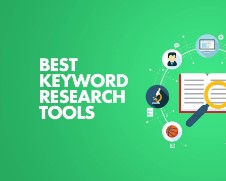Creating a strong online presence is crucial for businesses, brands, and individuals looking to expand their reach. One of the most effective and sustainable strategies to drive traffic to your website is by using content as an advertising tool. Whether you’re running a blog, an e-commerce platform, or a service-based business, content marketing plays a central role in engaging your audience, improving SEO, and establishing authority in your niche.
Content is no longer just a medium for communication; it has evolved into a powerful marketing tool. Through well-crafted and strategically distributed content, businesses can educate, inform, entertain, and connect with their target audience, ultimately driving consistent traffic to their website. In this article, we’ll explore how content can be harnessed as an advertising tool to attract visitors to your site and elevate your digital marketing efforts.
The Power of Content Marketing
Before we dive into the specifics, it’s important to understand the role of content marketing in driving website traffic. Content marketing refers to the creation and distribution of valuable content aimed at attracting and engaging a specific audience. It focuses on providing relevant, informative, or entertaining material that resonates with your target customers, helping to build trust and credibility over time.
Unlike traditional advertising, content marketing nurtures relationships with potential customers rather than pushing a hard sell. The primary goal is to create content that addresses their pain points, answers their questions, and offers solutions, all while driving them toward your website where they can take the next step—whether it’s making a purchase, signing up for a newsletter, or downloading a resource.
Effective content marketing increases organic traffic, enhances brand awareness, and supports other advertising efforts, such as paid ads or social media campaigns. This is because content marketing focuses on long-term strategies rather than quick fixes. It builds momentum over time as search engines, social shares, and word-of-mouth work in favor of your content’s visibility.
Types of Content That Drive Traffic
There are various types of content you can create to drive traffic to your website. By diversifying your content strategy, you’ll be able to appeal to different segments of your audience and attract more visitors. Some popular types of content include:
1. Blog Posts and Articles
Blogging remains one of the most powerful tools for driving organic traffic to your website. When you create high-quality, informative blog posts that address your audience’s interests and needs, you’re increasing your chances of ranking higher on search engine results pages (SERPs). Well-optimized blog posts provide both value and SEO benefits, attracting search engines and visitors alike.
Best Practices for Blog Posts:
- Write compelling headlines that include target keywords.
- Ensure your content answers specific questions your audience is asking.
- Use visuals like images, infographics, and videos to enhance the user experience.
- Add internal and external links to relevant content on your website and authoritative sources.
2. SEO-Optimized Content
Search engine optimization (SEO) is a critical element of driving traffic to your site. By optimizing your content with relevant keywords, meta tags, descriptions, and quality backlinks, you increase your chances of ranking higher in search engines like Google. The higher you rank, the more visible your website becomes to users actively searching for solutions in your niche.
Best Practices for SEO:
- Conduct keyword research to understand what your audience is searching for.
- Create long-form content that fully answers the questions posed by searchers.
- Optimize the technical aspects of your website (e.g., page load speed, mobile optimization).
- Regularly update old content to maintain its relevance and ranking.
3. Social Media Posts
Social media platforms are a valuable outlet for driving traffic to your website. By sharing content that engages your audience, you can increase visibility and create opportunities for users to click through to your site. The goal is not just to promote but also to foster a conversation, encouraging shares, comments, and likes to amplify your reach.
Best Practices for Social Media:
- Share blog posts, videos, infographics, and customer stories.
- Use hashtags strategically to extend your reach.
- Post regularly and interact with your audience to build a community.
- Use visually appealing images and short, catchy captions to grab attention.
4. Video Content
Video content is becoming increasingly popular in content marketing due to its ability to engage users in a way other types of content cannot. Videos are an excellent way to explain complex concepts, demonstrate products, or tell compelling stories. By posting video content on platforms like YouTube, Vimeo, or even embedding it on your website, you can drive traffic to your site while also improving engagement and retention.
- Best Practices for Video Content:
- Keep videos concise and engaging.
- Provide clear calls to action (CTAs) at the end of the video, encouraging viewers to visit your site.
- Optimize video titles, descriptions, and tags to improve visibility in search results.
5. Infographics
Infographics are highly shareable and effective in conveying complex data or information in a visually appealing format. They can be used to illustrate key concepts, statistics, or step-by-step processes. By sharing infographics on social media or through guest posts on other websites, you can drive traffic back to your site.
Best Practices for Infographics:
- Make sure the design is clean, professional, and easy to understand.
- Include your branding, such as your logo or website URL.
- Add a call to action (CTA) or a link back to your website for more information.
6. E-books and Whitepapers
E-books and whitepapers are in-depth resources that provide valuable insights to your audience. Offering these downloadable resources on your website in exchange for contact information is a great way to capture leads while driving traffic. By providing solutions to your audience’s pain points, you establish credibility and create long-term relationships.
Best Practices for E-books and Whitepapers:
- Focus on solving a specific problem that your audience faces.
- Include strong CTAs, inviting visitors to download the resource.
- Promote the resource through blog posts, social media, and email marketing.
How to Promote Content to Maximize Traffic
Creating great content is only half the battle. Once you have your content ready, you need to promote it effectively to maximize its reach. Here are a few ways you can promote your content to drive more traffic to your website:
1. Leverage Email Marketing
Email marketing remains one of the most effective ways to promote content directly to a dedicated audience. By segmenting your email list and sending personalized emails with links to your content, you can increase your website’s traffic. Make sure your emails contain engaging subject lines, brief summaries, and a CTA that encourages recipients to visit your site.
2. Use Paid Advertising to Boost Content
Paid advertising, such as Google Ads, Facebook Ads, and LinkedIn Ads, can help amplify your content’s reach. By targeting specific demographics and interests, you can ensure that your content reaches the right people who are most likely to visit your site.
3. Guest Blogging and Partnerships
Collaborating with influencers, bloggers, or other businesses in your niche can help drive traffic to your website. Guest blogging allows you to tap into established audiences by contributing content to other websites while linking back to your own. This not only increases traffic but also builds backlinks, which can improve your site’s SEO.
4. Repurpose Content Across Platforms
To ensure your content reaches a wider audience, repurpose it across different platforms. For instance, you can turn a blog post into a video, an infographic, or a podcast episode. By presenting your content in different formats, you appeal to diverse audience preferences while also driving traffic from different channels.
Measuring Success: Analytics and Adjustments
Once you start using content as an advertising tool, it’s important to measure your success. Tools like Google Analytics can provide valuable insights into how your content is performing and where your traffic is coming from. Look at metrics such as page views, bounce rates, average time on page, and conversions to determine which pieces of content are driving the most traffic.
Based on this data, you can refine your content strategy to focus on the formats and topics that are most effective at driving traffic to your site.
Content marketing has become an indispensable tool in any modern advertising strategy. By creating high-quality, engaging, and valuable content, you can attract visitors to your website and build lasting relationships with your audience. The key is to deliver content that speaks directly to the needs and interests of your target market while using the right promotional channels to increase visibility and traffic.
Incorporating content as a central component of your advertising efforts is a long-term strategy that can yield significant benefits. Whether you’re a small business or a large corporation, leveraging content to drive traffic will position you for sustained online growth.




